
Strolling through the forest garden in spring 2013
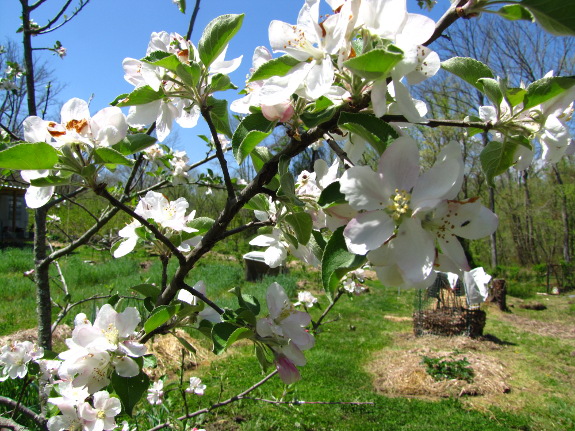
The apple blossoms are
so beautiful, they've been tempting me to take lots of extra strolls
through the forest garden. It's inspiring to see how this waterlogged,
terrible soil has
turned from a weed
pit into a budding
forest garden in just a few years.
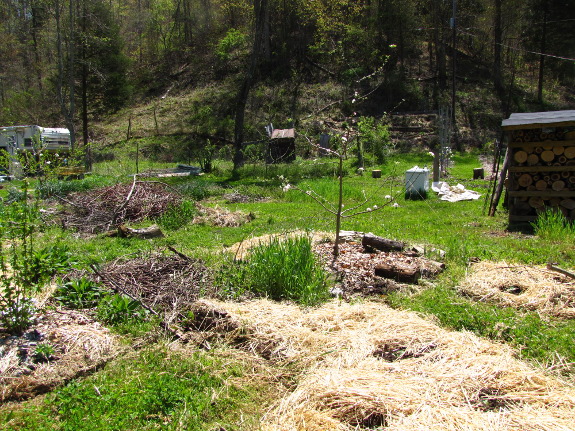
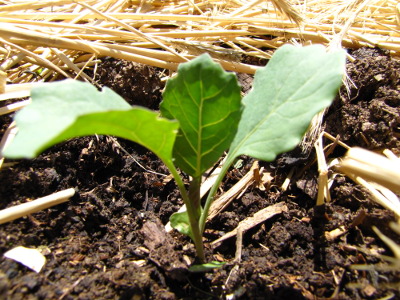 Adding
vegetable beds beyond the trees' canopies is the real root of the
current success. Last year, we grew tomatoes and butternuts in
these extra spaces, with broccoli and cabbage taking their place this
spring. My usual pre-crop topdressing of composted manure is
helping build soil that tree roots will eventually fill, and the
immediate gratification of vegetables prevents the forest garden from
becoming neglected.
Adding
vegetable beds beyond the trees' canopies is the real root of the
current success. Last year, we grew tomatoes and butternuts in
these extra spaces, with broccoli and cabbage taking their place this
spring. My usual pre-crop topdressing of composted manure is
helping build soil that tree roots will eventually fill, and the
immediate gratification of vegetables prevents the forest garden from
becoming neglected.
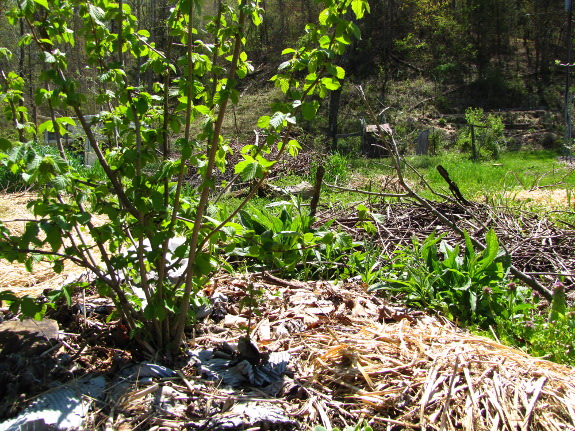
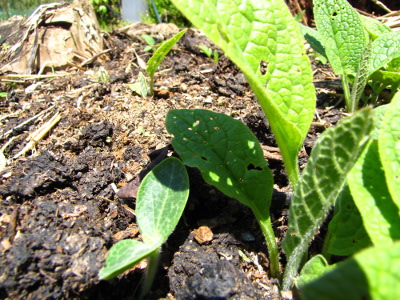 All of my trees and shrubs
are planted on mounds so they don't perish during
the winter, when lower parts of the forest garden turn into a
swamp. The unkillable comfrey gets to live at ground level,
though.
All of my trees and shrubs
are planted on mounds so they don't perish during
the winter, when lower parts of the forest garden turn into a
swamp. The unkillable comfrey gets to live at ground level,
though.
I've taken to planting
comfrey at what will be the eventual edge of the fruit trees'
canopies. I've learned the hard way that comfrey
can kill my fruit trees if planted too close, and that a bed planted in
comfrey will always be planted in comfrey. The little comfrey
leaves in the photo above pushed up through a kill
mulch two years ago,
had every root I could find transplanted out last winter, and are still
coming up copiously. I suspect this bed will be as full of
comfrey as ever in a few months, and it has also seeded approximately
50 new spots in my garden and beyond this spring.
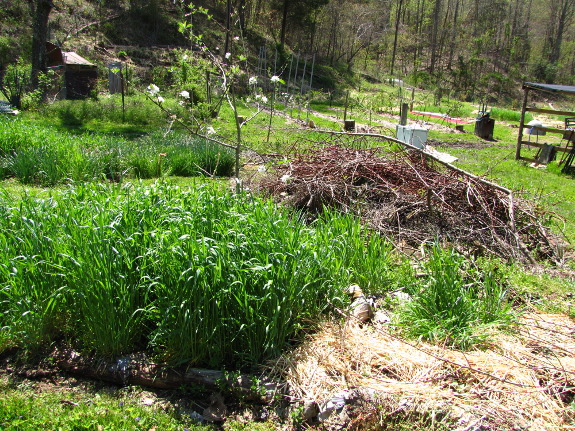
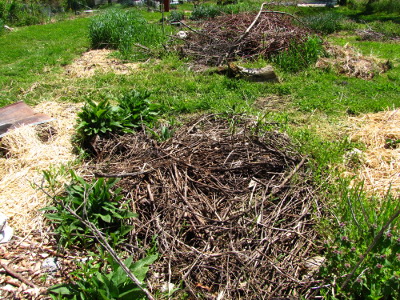 Since the soil is terrible,
one of my top forest-gardening priorities is to add humus to areas
where tree roots will soon reach. Piles of prunings from fruit
trees, berry bushes, and brush clearing are rotting down and creating
eventual spots of raised, rich soil. Rye is doing a similar job
in the short term.
Since the soil is terrible,
one of my top forest-gardening priorities is to add humus to areas
where tree roots will soon reach. Piles of prunings from fruit
trees, berry bushes, and brush clearing are rotting down and creating
eventual spots of raised, rich soil. Rye is doing a similar job
in the short term.
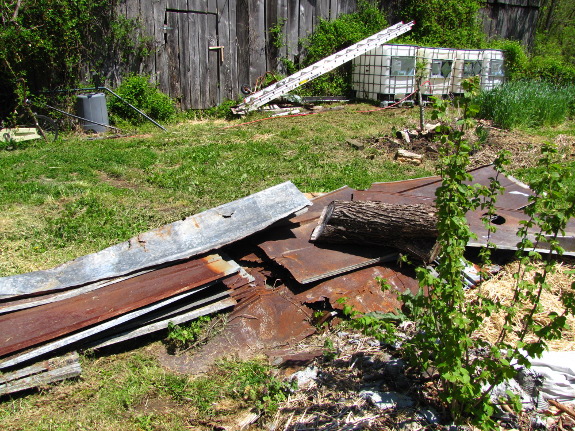
Of course, the forest
garden still has issues. For example, the old tin off the barn
roof is still sitting in a pile waiting to go to the scrap yard.
If I were a true permaculturalist, I'd say the tin is a protected
habitat for snakes that eat the voles that inevitably spring up in
heavy-mulch situations, but since Lucy kills snakes on sight, that
theory doesn't hold much water. Instead, I can only say that the
floodplain allows hauling only a few times a year, and junk tin has yet
to reach the top priority list. Maybe in 2013....
Want more in-depth information? Browse through our books.
Or explore more posts by date or by subject.
About us: Anna Hess and Mark Hamilton spent over a decade living self-sufficiently in the mountains of Virginia before moving north to start over from scratch in the foothills of Ohio. They've experimented with permaculture, no-till gardening, trailersteading, home-based microbusinesses and much more, writing about their adventures in both blogs and books.
Want to be notified when new comments are posted on this page? Click on the RSS button after you add a comment to subscribe to the comment feed, or simply check the box beside "email replies to me" while writing your comment.
- Remove comment
